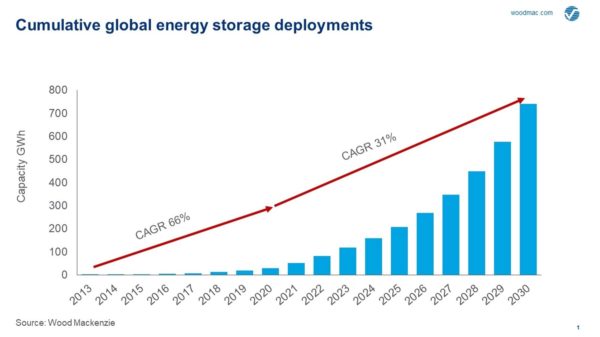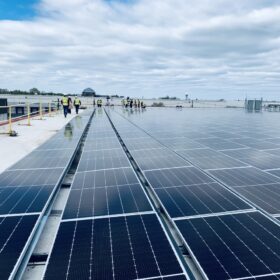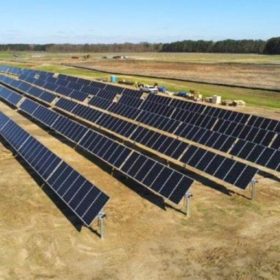A coalition of solar and environmental groups filed an emergency motion with the Illinois Commerce Commission to prevent utility company Ameren from devastating rooftop solar in southern and central Illinois. Last week Ameren told the Commission it intends to eliminate fair compensation for the solar energy homeowners and families produce. Ameren would slash the credits solar customers receive for excess clean energy, a foundational policy known as net metering, as soon as October 1. The abrupt move would cost the average residential solar customer hundreds of dollars per year, wiping out savings on energy bills and putting solar projects out of reach for many consumers. Source: ELPC
South Carolina adopted a solar industry proposal to study electricity market reforms: Yesterday Governor McMaster signed into law H. 4940, SEIA’s recommendation to create a committee that will study electricity market reform in South Carolina. Parallel legislation has been proposed in North Carolina and is expected to be considered early next year. Source: SEIA
How America could boost solar power by 56% using idle highway land. The U.S. could harvest 36 TWh of clean energy a year, worth some $4 billion in revenue, if states put solar panels on the highway interchange rights-of-way (ROW) they own, a study has concluded. Most states have more than 200 miles of ROW at interchanges, around 127,500 acres in area, that is suitable for solar development, finds a new nationwide mapping tool developed by solar transport innovation group “The Ray” and the Webber Energy Group at the University of Texas, Austin. Source: Global Construction Review
Solar design software startup Aurora has added battery backup recommendations for its customers — a way for homeowners to buy the appropriate backup storage system for their needs and critical loads during an outage.
Global energy storage capacity could grow at a CAGR of 31%, recording 741 GWh of cumulative capacity by 2030. Front-of-the-meter will continue to dominate annual deployments and will account for up to 70% of annual total capacity additions to the end of the decade. The US maintains pole position and will make up over 49% or 365 GWh of global cumulative capacity by 2030.

Source: Wood Mackenzie
This content is protected by copyright and may not be reused. If you want to cooperate with us and would like to reuse some of our content, please contact: editors@pv-magazine.com.








Why wouldn’t utilities fight NEM? If we’re being honest it’s not a fair pricing structure and never has been. It’s a teaser loan rate that should have expired several years ago.
Look at Germany where back-feed gets 10 cents/kWh compared to retail that’s over 30 cents/kWh. The solution isn’t NEM… NEM is a crutch… The solution is self-consumption. Self-consumption allows you to capture retail value without using the utility as a go between.
The wonderful thing about self-consumption is that the technologies you need to enable it are all relatively cheap. Just heat your water heater between A and B instead of J and K. Just charge your car between 2 and 4 AM instead of 7 and 9 PM. Same goes with pool pumps. Same goes with commercial batch loads.
Natural self-consumption rates are around 25 to 30% in Germany for a typical household. Engineered self-consumption rates can be 50 to 75%. If you’re consuming three quarters of your production you don’t much care that the last 25% isn’t getting retail value.
Hey… Think of it this way. Someday, we’ll all be used to regularly throwing away 25 to 50% of daytime solar electricity. It’s the whole too cheap to meter thing except it’s more like too cheap to care. It’s amazing how long it’s take the solar crowd in the US to grow up and realize NEM isn’t a god given right.
I built an Off-Grid solar panel system with batteries that can power most of my house, day or night but the batteries cost and extra $8,000.00 and must be replaced every 7 years. With an “on grid” system , you do not need the batteries but could install an extra $8,000.00 of solar panels to allow you to give the utiltiy 3 watts durring the day light hours, for ever one watt you get back at night when you use less anyway. The extra Solar panes will last over 25 years, not 7 years like the batteries that you would need to swap out 3 additional times or $32,000.00 battery cost over the same 25 years. power Walls, that use lithiium batteries, will last maybee 10 years but even those would have to be swapped out twice over 25 years at $7,000.00 each..ouch. I am augmenting my off grid system with a Tesla Solar Glass Roof that will not have any batteries, but, using battery chargers, tap into the excess sunlight power to charge the batteries with regular automotive battery chargers for the 12 volt lead acid batteries. If lithium batteries come down in price, i could change out the lead acid batteries to lithium Power walls. JoeJoe is correct in saying we need to use OUR solar to do OUR work by timing our loads.
The Ameren adjustment is not an abrupt policy change. It was a pre established threshold of 5% that was met rather quickly due to the favorable REC payment structure that was established under Illinois legislation that was passed in 2016. The policy changes to net energy metering only and does not net out distribution charges. Utilizing the electric grid that is paid for by all Ameren customers as a personal backup without paying for your share of the wires is the only unfair policy.